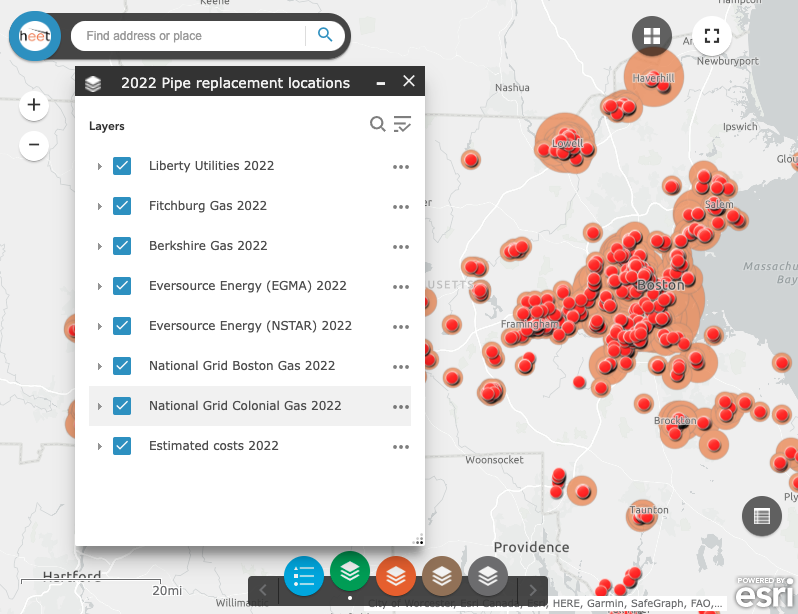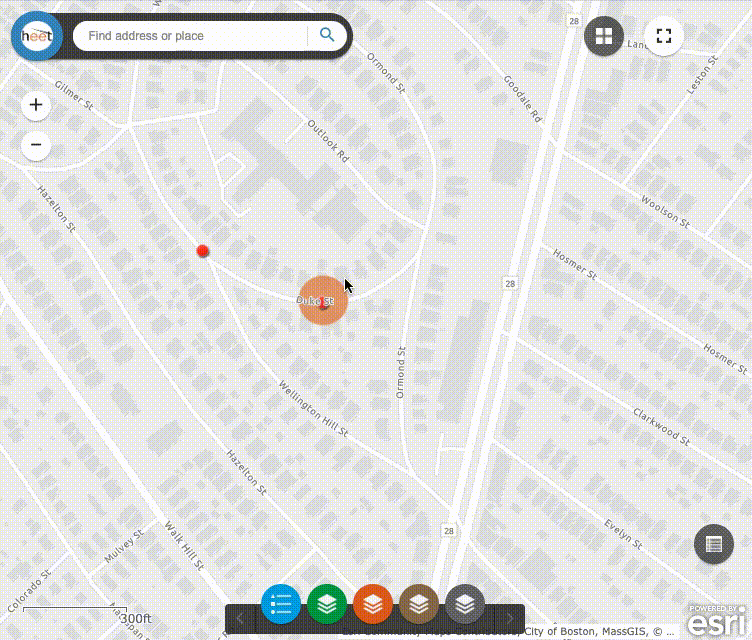Using the Map
The map includes the following layers of information:
- 2024 planned locations and cost estimates for each utility, as filed with the DPU in 2023
- 2025-2028 planned locations for each utility as filed with the DPU in 2023

Controls
The map application provides controls for navigating and exploring.

Layers
The map provides various layers of information which can be selected with the layer selection buttons. In the example below, all layers in the 2022 Pipe replacement locations group are turned on.

Interacting With the Map
To see detailed information about a GSEP location, click on it. If multiple layers of information are available, use the Next feature and Previousfeature buttons to scroll them. In this example, we scroll between the details for a pipe replacement location planned for 2022, and the summary of the cost estimate for the projects’ locations. This particular project contained two pipe replacement locations – 4-140 Wellington Hill St, and 1-37 Duke St, Dorchester.

How the map was made
In 2019, HEET developed a new process for extracting and geocoding planned GSEP locations from the annual GSEP reports. This process continues to be advanced and improved. For example in 2022, an additional process step was added to maximize the accuracy of the extracted locations. The resulting data can be used in other analyses, research and mapping. In addition to being used to create this map, the data can be used in any mapping platforms that can consume geocoded data.
The process in overview is as follows:
- Annually reported GSEP data is obtained from MA DPU
- The data is reviewed, selected and then extracted from the reports with HEET proprietary data parsers
- The GSEP locations are geocoded using HEET proprietary software
- All geocoded locations are reviewed for errors in the original utility GSEP location addresses, as well as any issues with the geocoding addresses that occasionally occur
- Corrected addresses are geocoded again, and any unresolved issues are manually dealt with to identify the best matching location and GPS coordinates
- Due to the inconsistent formats and structures of the reported data, automation only goes so far, so a second extensive manual process added in 2022 is now performed to maximize the accuracy of the final locations
- The final results are merged back into the original reported plans
- After final testing, the data is baked and ready for sharing or mapping.










